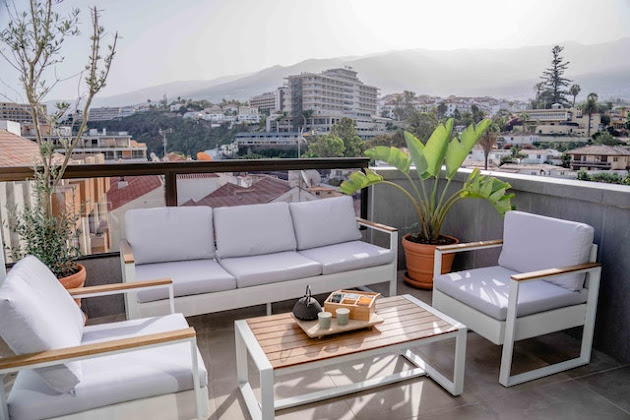Feng Shui: Living by the art of placement
The term Feng Shui translates to "wind-water" in English, and it is based on the belief that energy, or "Chi," flows through everything in the universe. Feng Shui is an ancient Chinese philosophy that is centered on the art of placement, a system that is used to create harmonious and balanced environments that promote health, prosperity, and happiness.
Feng Shui
includes arranging things and furniture in a precise way to produce good energy
flow in a room, taking into consideration the direction of a structure, the
surrounding landscape, and the placement of furniture and ornamental items. The
purpose of Feng Shui is to create a setting that feels balanced and harmonious,
as well as one that promotes the well-being of those who live in it.
In Feng Shui, there are five elements that are
used to balance the energy in a space: water, wood, fire, earth, and metal. These elements are represented by
colors, shapes, and materials. For example, water is associated with the color
blue and the shape of a wavy line, while earth is associated with the color yellow
and the shape of a square.
There are
also certain areas of a space that are believed to be more important than
others in Feng Shui. These areas are known as Bagua areas, and they are associated with different aspects of life
such as health, wealth, and relationships. By placing certain objects and
colors in these areas, it is believed that you can enhance the corresponding
aspect of your life.
Bagua areas
are a fundamental concept in Feng Shui, a traditional Chinese practice that
aims to harmonize the environment with human energy. The Bagua areas are
represented by an octagon-shaped map called the Bagua map, which is
superimposed on the floor plan of a space. Each area is associated with a
specific color, element, direction, and symbol.
Here are
the eight Bagua areas and their corresponding aspects of life:
Career: This area is located at the north of the Bagua
map and represents your work and life purpose. The color associated with this
area is black, and the element is water.
Knowledge: The northeast area of the Bagua map represents
knowledge and wisdom. This area is associated with the color blue and the
element earth.
Family: The east area of the Bagua map represents
family and ancestral roots. The color associated with this area is green, and
the element is wood.
Wealth: The southeast area of the Bagua map represents
wealth and abundance. The color associated with this area is purple, and the
element is wood.
Fame: The south area of the Bagua map represents
fame and reputation. The color associated with this area is red, and the
element is fire.
Love and Relationships: The southwest area of the Bagua map
represents love, marriage, and relationships. The color associated with this
area is pink, and the element is earth.
Creativity: The west area of the Bagua map represents
creativity and children. The color associated with this area is white, and the
element is metal.
Helpful People and Travel: The northwest area of the Bagua map
represents helpful people and travel. The color associated with this area is
gray, and the element is metal.
How to use a bagua map if you live in an
apartment:
Align the
bottom of the bagua map with your front entrance wall. Your front door will
most likely be in the knowledge and self-cultivation area, career area, or
helpful people area.
Stage your apartment according to Feng Shui, here are some tips to get you
started:
Declutter:
The first step in Feng Shui is to declutter and get rid of any unnecessary
items in your apartment. This will help create a sense of space and allow
energy to flow more freely.
Create a
welcoming entrance: Your apartment entrance is an important area as it sets the
tone for the rest of your space. Make sure it is well-lit, clean, and free of
clutter. You can also add a plant or a welcome mat to make it more inviting.
Balance the
elements: As mentioned earlier, there are five elements in Feng Shui - water,
wood, fire, earth, and metal. Make sure to incorporate these elements into your
space to create balance. For example, you can add plants for wood, a water
feature for water, candles for fire, stones for earth, and metal accents for
metal.
Place furniture
mindfully: The placement of your furniture is important in Feng Shui. Avoid
placing your sofa or bed directly facing the door as it can disrupt the energy
flow. Instead, place them diagonally or with a solid wall behind them for
support.
Create a
focal point: A focal point is an area in your apartment that draws the eye and
creates a sense of harmony. This can be a piece of artwork, a plant, or a piece
of furniture. Make sure to highlight this area with good lighting and decorate
it with colors and objects that you love.
Use color
mindfully: Colors can have a significant impact on our mood and energy levels.
In Feng Shui, each color represents an element and has a specific meaning. For
example, red is associated with fire and passion, while blue represents water
and calmness. Choose colors that make you feel good and incorporate them into
your space mindfully.
Is room orientation crucial for feng sui?
Yes, room
orientation is crucial for Feng Shui. In this philosophy, the orientation of a
room and the placement of objects within it can affect the flow of energy (Chi)
and impact the well-being of those who inhabit the space.
For example, in Feng Shui, it is believed that the best orientation for a bedroom is with the bed facing the door, but not in direct alignment with it. This allows the person sleeping in the bed to see who is coming into the room, but also creates a sense of safety and security. In contrast, having the bed directly aligned with the door can create an uneasy feeling and disrupt the flow of energy.
Similarly, the placement of furniture and objects in a room can also impact energy flow. For example, placing a mirror in front of the bed is believed to reflect energy and disrupt sleep, while placing a plant in the corner of a room is believed to promote positive energy flow.
Reposted to CityProperties Real Estate





Comments
Post a Comment